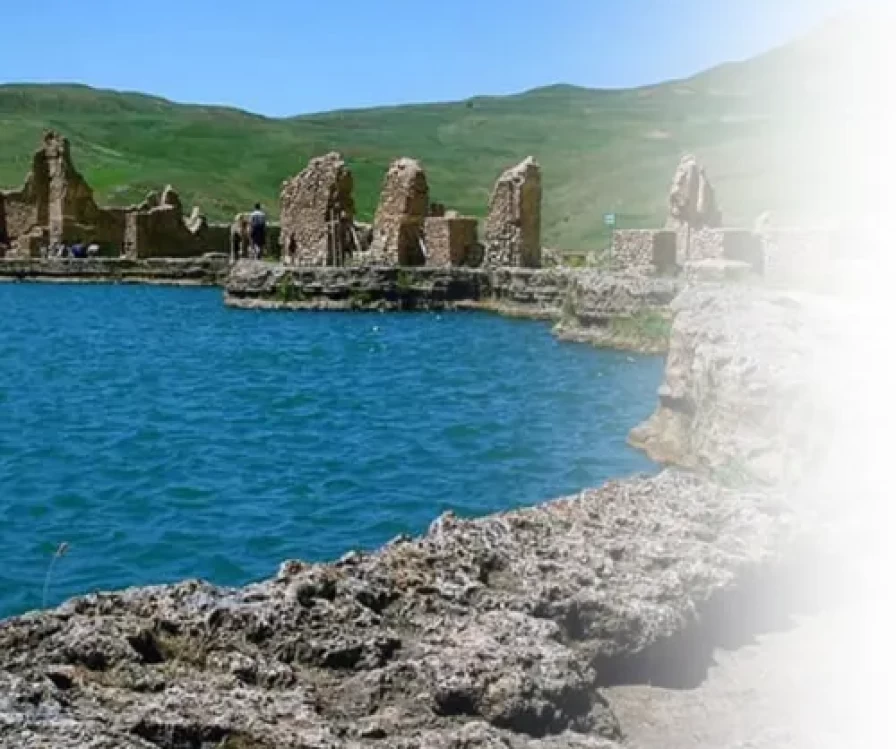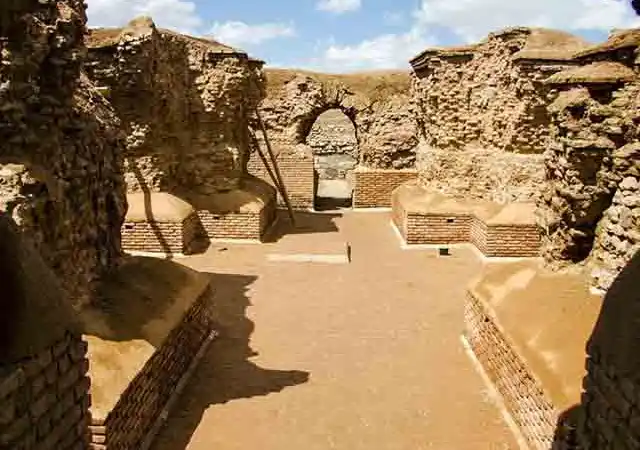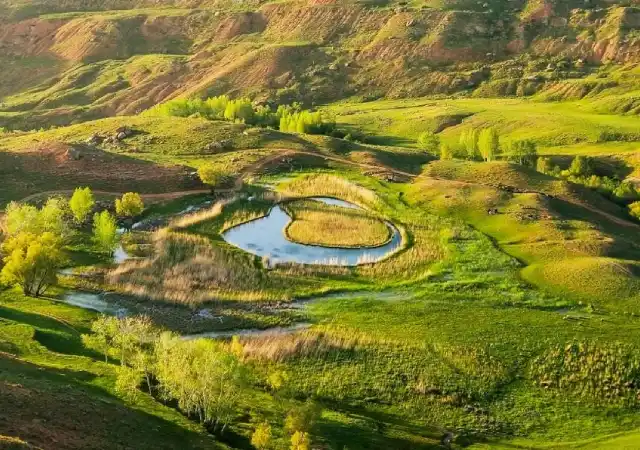
Unveiling the Ancient Majesty of Takht-e Soleyman in Iran for History Enthusiasts





Takhte Soleiman
Iran, a land steeped in layers of history and mythology, offers travellers the chance to explore truly awe-inspiring ancient sites. Among these, Takht-e Soleyman , meaning the Throne of Solomon, stands as a remarkable UNESCO World Heritage site in West Azerbaijan province. This archaeological complex, with its fascinating blend of Zoroastrian and Ilkhanid-era ruins, evokes a sense of wonder and invites exploration into the depths of Persian history and legend. Often referred to simply as " takhte soleyman ", this site holds significant cultural and historical value. As Sanapersian tour and travel service providers, we are honoured to guide you through the wonders of this ancient sanctuary. This guide aims to illuminate the historical significance, architectural marvels, and the experience of visiting takht-e soleyman , providing essential information for your potential exploration. Whether you are captivated by ancient religions, intrigued by archaeological discoveries, or simply seeking to witness a site of profound historical importance, understanding the layers of history at this location will undoubtedly enrich your Iran travel itinerary .
The history of takht-e soleyman spans millennia, with evidence of human habitation dating back to the first millennium BCE. It was a significant Zoroastrian fire temple during the Sasanian Empire, known as Adur Gushnasp, one of the three great royal fires. Following the Islamic conquest, the site continued to be important, with the Ilkhanid Mongol rulers constructing a summer palace and hunting lodge within its ancient walls in the 13th century. Exploring the " takht e sulaiman history " reveals a captivating narrative of religious transition and royal patronage. The association with the biblical King Solomon, giving rise to the name " throne of solomon ", is largely based on local legend and predates definitive historical records of the site's construction.
The " throne of solomon location " is in the Takab County of West Azerbaijan province in northwestern Iran. For travellers planning to visit this historical site, the nearest major airport is in Urmia or even further in Tabriz. The " Throne of Solomon Iran " is somewhat remote, adding to its sense of ancient grandeur. While a detailed " Takht-e-sulaiman map " of the archaeological complex is available at the site, understanding its general location within the province is key for travel planning. The " Takht-e-sulaiman map " can help you navigate the various ruins.
The archaeological complex of takht-e soleyman encompasses the impressive remains of the Sasanian fire temple, including the sacred lake, and the later Ilkhanid structures. The well-preserved walls, towers, and the layout of the royal quarters offer a tangible glimpse into the architectural styles of these different periods. Examining " takht-e soleyman photos " provides a visual appreciation for the scale and the surviving details of this ancient site. The elliptical wall surrounding the complex is a particularly striking feature.
Visiting takht-e soleyman involves exploring the extensive archaeological remains. Key attractions include the sacred lake, believed to have mystical properties; the ruins of the Adur Gushnasp fire temple; the Ilkhanid palace with its intricate tilework; and the surrounding fortifications. Understanding the " takht e sulaiman history " enhances the experience of walking through these ancient grounds. The " takht-e soleyman photos " you might have seen will come to life as you witness the actual scale and setting. The " takht e sulaiman height " above sea level contributes to the unique atmosphere of the site.
The " Takht Soleiman age " spans over 1500 years of significant construction and use, reflecting the rise and fall of empires and religious shifts. While the biblical " Throne of Solomon " is a local association, the archaeological evidence firmly points to its importance during the Zoroastrian and Ilkhanid periods. Understanding the distinction between legend and historical fact adds another layer of intrigue to the site. The question " the takht e sulaiman is located in which province " is answered by West Azerbaijan, highlighting its regional significance.
While exploring Takht-e soleyman , it's also worth noting the nearby archaeological site of Takht-e Bilqees , associated with the Queen of Sheba in local tradition. While distinct, the proximity of these sites underscores the rich historical tapestry of the region. Consulting a " Takht-e-sulaiman map " of the broader area can help you understand the relationship between these ancient locations.
When planning your visit to takht-e soleyman , consider the travel time to this relatively remote location. The best time to visit is during the warmer months (late spring to early autumn, perhaps late May to early September ) for pleasant weather. Hiring a local guide at the site can significantly enhance your understanding of its history and significance. Allow ample time to explore the extensive ruins and soak in the atmosphere of this ancient sanctuary. As Sanapersian tour and travel service providers, we are eager to introduce history enthusiasts to the captivating ancient site of Takht-e Soleyman . Its blend of historical significance, architectural remnants, and mythical associations offers a truly unforgettable journey into the past. Let us help you craft an itinerary that includes the wonders of this UNESCO World Heritage site.
Contact Us
+989054577261